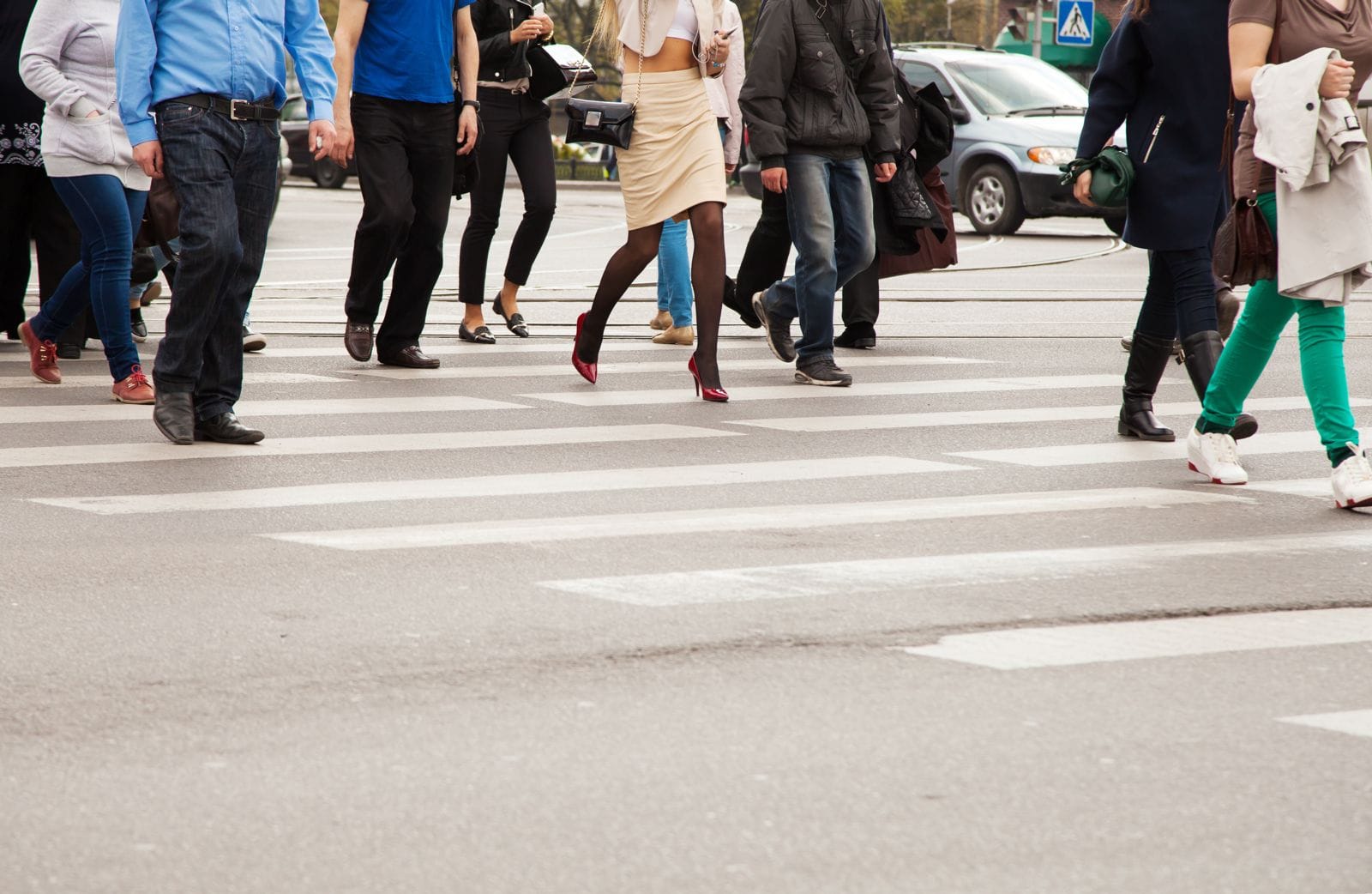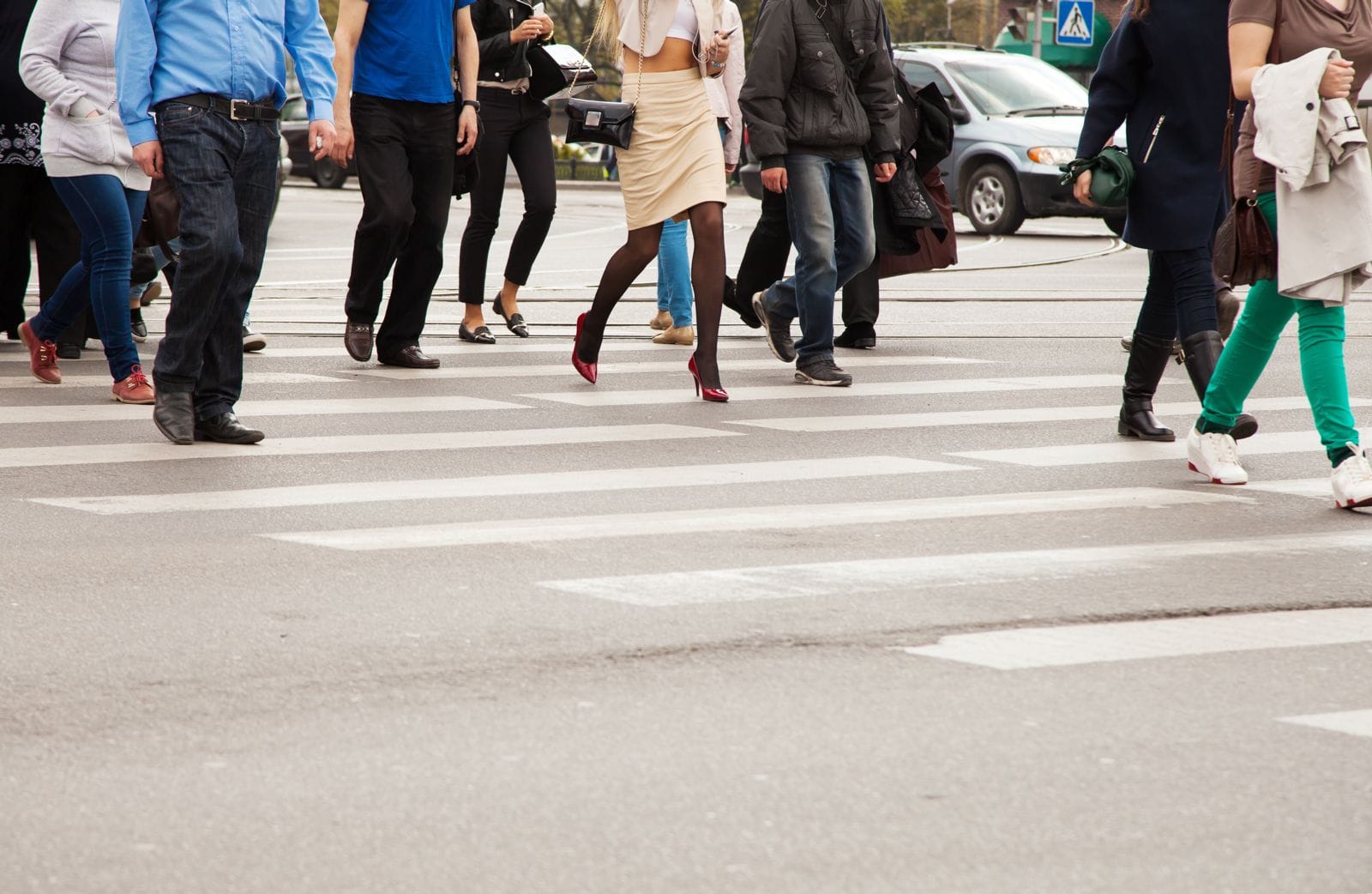Most accidents involving motor vehicles occur when one driver makes a mistake and crashes into another vehicle. However, there are less common types of accidents that do not involve two motor vehicles, but instead involve one motor vehicle and a pedestrian. Just because these accidents are uncommon does not mean that they never happen. In fact, Virginia’s department of motor vehicles has kept a record of all reported pedestrian crashes since 2009.
Facts About Pedestrian Accidents
If you want to know just how common these pedestrian accidents are, click here. Perhaps most surprising about this information is that the number of pedestrians injured steadily rose for four years before dropping again in 2013. It is anyone’s guess why this decline occurred, and it will be interesting to see if the trend continues once the data are collected for 2014. Regardless of whether the number increases or decreases, it is worth mentioning that there were well over 1,000 pedestrian accident victims annually.
While the information is sorted by age, there seems to be very little correlation between age and likelihood of an accident. In 2009, the number of accidents seemed to increase slightly as the age of the victims increased, but this was not always the case. In fact, there are no easily discernible correlations between age and likelihood of an accident, which shows that the accidents do not discriminate and that it could happen to anyone.

Pedestrian Accidents Cause Serious Injuries
Pedestrians who are struck by any type of vehicle will almost certainly be dealing with serious injuries, and in many cases, the accident could be fatal. Virginia residents who are injured in such an accident or survivors of those who have died in an accident are encouraged to seek the aid of an attorney to find out if they can be compensated.
Legal Aid For Pedestrian Accident Victims
It is fairly common knowledge that pedestrians have the right of way when crossing the road, especially in slow-moving places like parking lots. Despite this, many pedestrians yield to oncoming cars simply because they know that even if they have the right of way, they could suffer serious injuries if they are struck by a car. Unfortunately, not all drivers respect the pedestrian right of way.
There are many reasons that a vehicle may strike a pedestrian, from the driver simply not paying attention, to the driver not waiting for the pedestrian to cross. Drivers who are looking for a parking spot may not even realize that a pedestrian is walking in front of them, but sometimes drivers intentionally attempt to use the size of their vehicle to intimidate pedestrians. If the pedestrian attempts to use his or her right of way, the results could be disastrous.
Of course, parking lots are not the only places that such accidents occur. Imagine you are at a crowded intersection in the middle of a big city. The crosswalk signal indicates that it is your turn to cross because the light for oncoming traffic is red. However, the vehicle in front of you wants to turn right on red, and, not realizing that you are about to walk in front of them, they begin moving.
As a pedestrian, you should always be aware of the vehicles moving around you, whether you live in a small town in Virginia or a big city in New York. Even if you are in the right, you will lose in the event of a collision. However, if you do find yourself in a pedestrian accident in which you were not at fault, you could file a claim against the driver. Our pedestrian accident webpage can give you more information about potential compensation, which will be able to help you with any financial obligations that your injuries incur.
Fairfax Pedestrian Accident Lawyers Can Help You
There are a few ways to avoid pedestrian accidents, such as looking both ways when crossing the street and only walking along crosswalks. Unfortunately, there is no guarantee that this will prevent you from being struck. If you are the victim of a pedestrian accident, consider meeting with an attorney to discuss the aspects of your case. A legal professional can help you investigate your case and make a strong claim if you were not at fault in the accident. Compensation recovered from a claim can be the difference between being able to afford the medical care you need and struggling with debt for years paying for an accident that was not your fault. Contact the Fairfax pedestrian accident lawyers at Kearney, Freeman, Fogarty & Joshi today if you have questions about a pedestrian accident lawsuit.


